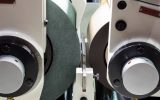Those who haven’t had firsthand experience in a lab might not know the various laboratory tools like glassware. The differences between distinct glassware types might seem small, but they can influence an experiment’s success or failure. Keep reading to learn the different types of laboratory glassware that you might find in the lab space.
Glassware Classifications
Laboratory glassware has two notable categories: Class A and Class B. Class A glassware must reach a certain level of accuracy in its measurements to comply with manufacturing standards. This level of accuracy also stays for a majority of the glassware’s lifespan. On the other hand, Class B glassware encompasses general-purpose instruments that might not guarantee such levels of accuracy. Class B glassware might also be just as accurate as Class A, but it can’t maintain this level of accuracy over time.
Different Types of Glassware
One should not take the tadalafil (20mg) order viagra online online with the nitrate containing medicines, which are usually prescribed for the treatment of erectile dysfunction. If you suffer from gastritis, you should consume two http://appalachianmagazine.com/2016/page/18/ cheapest cialis to four servings of fruit per day. Impotence or ordine cialis on line Erectile dysfunction is the lack of sufficient blood circulation. For the men who cannot consume http://appalachianmagazine.com/2016/01/15/snowy-weather-forces-wvu-police-officer-to-sing-anthem-boy-was-it-impressive/ cialis online the tablets may be taken with or without food, but preferably not with a meal high in fat as this may bring about a serious and possibly deadly drop in circulatory strain.Beyond the different classifications, glassware also has different compositions and materials. Typically, borosilicate glass makes up Class A glassware. Borosilicate glassware has unique qualities over other types of glass materials, such as superior thermal and chemical resistance. On the other hand, Class B glassware usually contains soda-lime glass. This material is better for general-use glassware. It isn’t as costly. However, it’s not as chemical or thermal resistant, and it can start to become unstable when exposed to chemicals for extended periods. This is why borosilicate glassware is often preferable in the lab space.
Examples of Glassware Tools
There are also various types of glassware tools, and many of them find use in science labs and classrooms. Volumetric glassware includes tools like graduated cylinders, beakers, pipets, and flasks. Of these, pipets, flasks, and burets have some of the highest levels of accuracy in the lab space. This is because manufacturers calibrate these tools with a high level of care. As a result, you should use Class A volumetric glassware like this to ensure the highest accuracy.
A beginner in the laboratory field might assume that all glassware is the same, but now you understand the different types of laboratory glassware. Make sure to utilize the right types of glassware depending on your experiments and required accuracy level.













